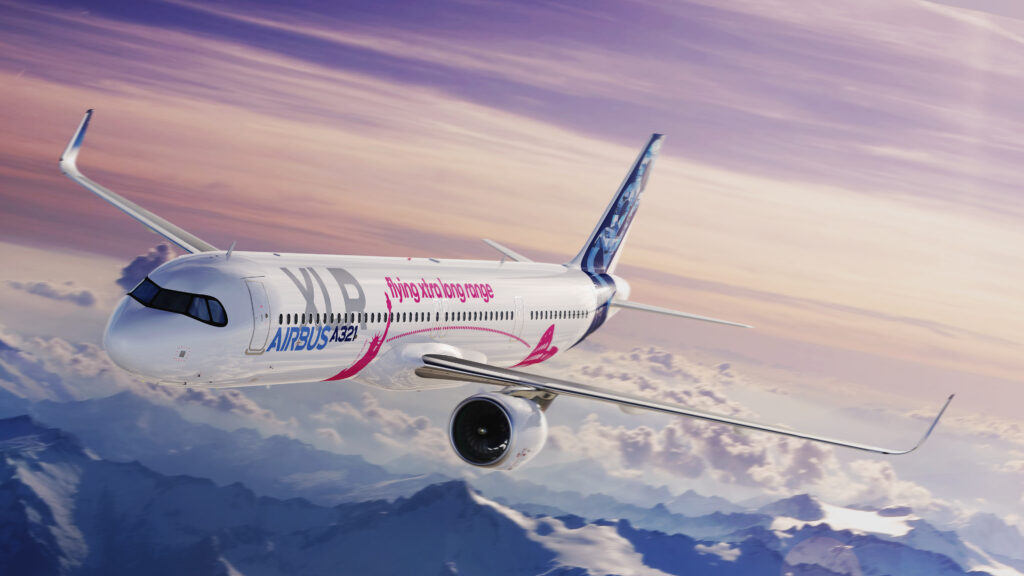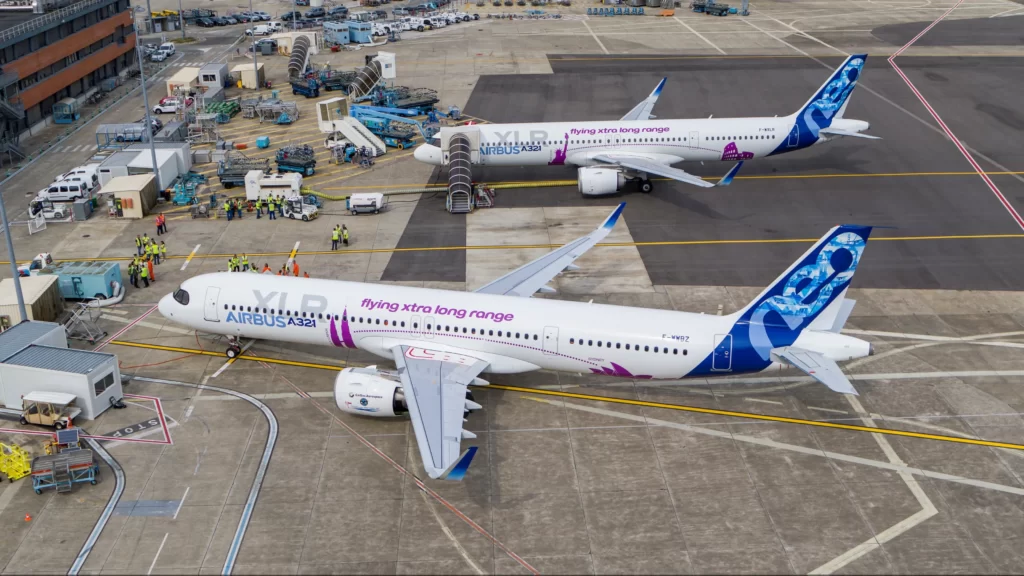TOULOUSE- Airbus (EPA: AIR) is facing certification delays for its revolutionary A321XLR, an ultra long range narrow-body jet that is expected to be a game-changer for long-haul travel.
An additional fuel tank enables the aircraft’s extended range, but safety concerns regarding the tank have caused setbacks in its certification process, reported OMAT.

Safety Modifications Impacting Airbus A321XLR Range
The Airbus A321XLR is designed to be the longest-range narrow-body aircraft ever, offering up to 4,700 nautical miles. This significantly expands the capabilities of point-to-point long-haul flights for airlines.
However, recent agreements between Airbus and the European Union Aviation Safety Agency (EASA) regarding new safety features have led to changes that could impact the aircraft’s range.
The A321XLR was introduced in 2019 and received over 500 orders from more than two dozen airlines. Subsequently making it a highly sought-after model.
With no direct competitor from Boeing, this aircraft gave Airbus a competitive edge in the long-range narrow-body jet market. It’s a role previously held by the Boeing 757.
The aircraft’s certification process encountered delays as the EASA expressed safety concerns about the extra fuel tank located in the rear fuselage, raising potential fire safety risks, reported Reuters.
However, recent reports indicate that Airbus and EASA have reached an agreement on new safety measures. Further paving the way for the aircraft’s certification.

Airbus A321XLR Safety Modifications for Certification
Airbus will implement new protective measures to address the safety concerns. This includes adding a protective liner to the rear fuel tank and reinforcing other critical components.
Unfortunately, these safety improvements will come at a significant cost. They are expected to add 700-800 kilograms to the aircraft’s weight.
The additional weight from safety modifications is predicted to reduce the A321XLR’s range by approximately 200 nautical miles. While the initial range was set to be 4,700 nautical miles, the modified range is estimated to be around 4,500 nautical miles.
However, practical operational considerations, such as jet streams and fuel reserves, would have already reduced the actual operational range to around 4,000 nautical miles. Further, the new changes bring it closer to 3,800 nautical miles.

Effects on Airlines and Routes:
While the reduced range may not significantly affect some routes, it could limit the viability of certain long-haul city pairs that airlines had planned to operate with the A321XLR.
Airlines like JetBlue (B6), which intended to fly from Fort Lauderdale to Paris and Buenos Aires, could face limitations due to the modified range.
Flights from the Midwest of the United States to Europe and from the Northeast of the United States to Eastern Europe may also be impacted.
With the range being affected, airlines might consider renegotiating their orders or exploring alternatives.
Airbus has reportedly approached some airlines to consider swapping their A321XLR orders for the larger A330neo aircraft. Especially if the performance gap between the aircraft could impact their original operational plans.

Bottom Line
The Airbus A321XLR faces the certification challenges due to safety concerns surrounding the fuel tank.
While the aircraft is expected to undergo safety modifications to address these issues, the changes will likely reduce its range by approximately 200 nautical miles.
Despite this setback, the A321XLR remains a unique offering in the single-aisle segment. Additionally, granting Airbus a competitive advantage over its rivals.
Stay tuned with us. Further, follow us on social media for the latest updates.
Join us on Telegram Group for the Latest Aviation Updates. Subsequently, follow us on Google News.

